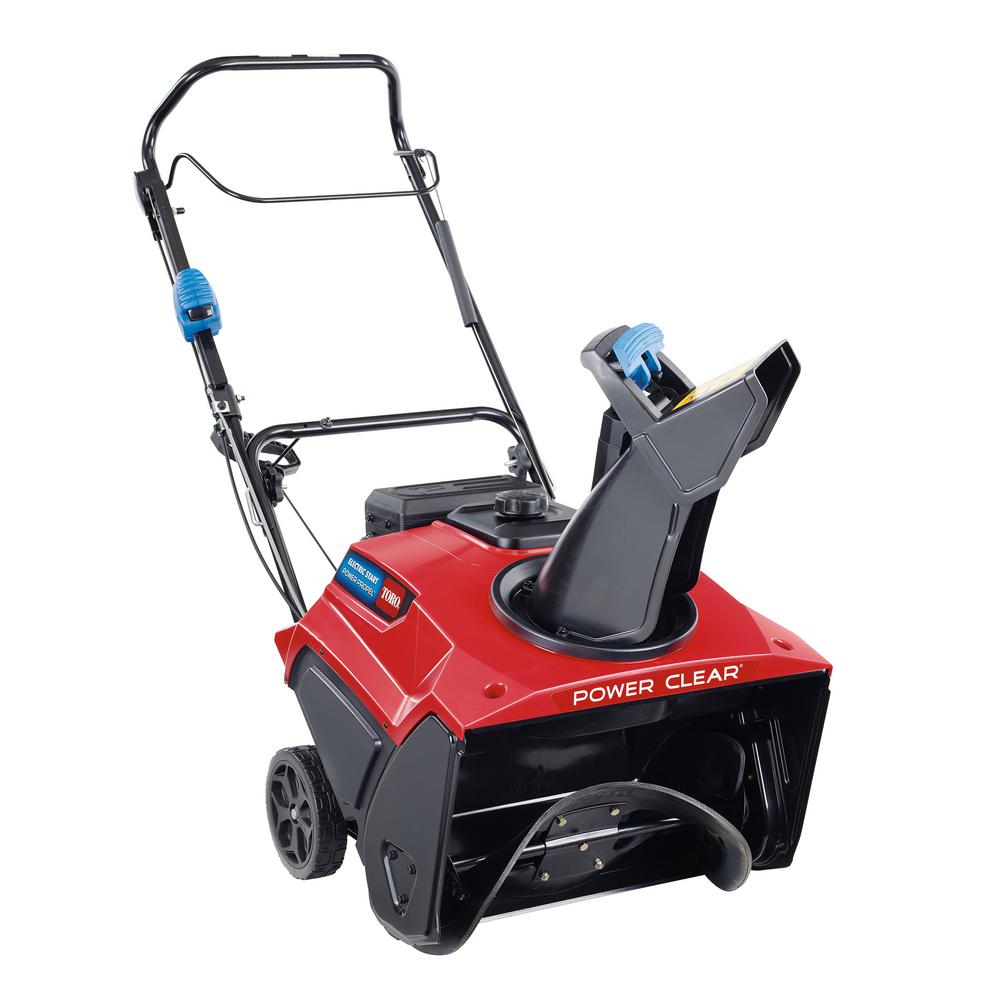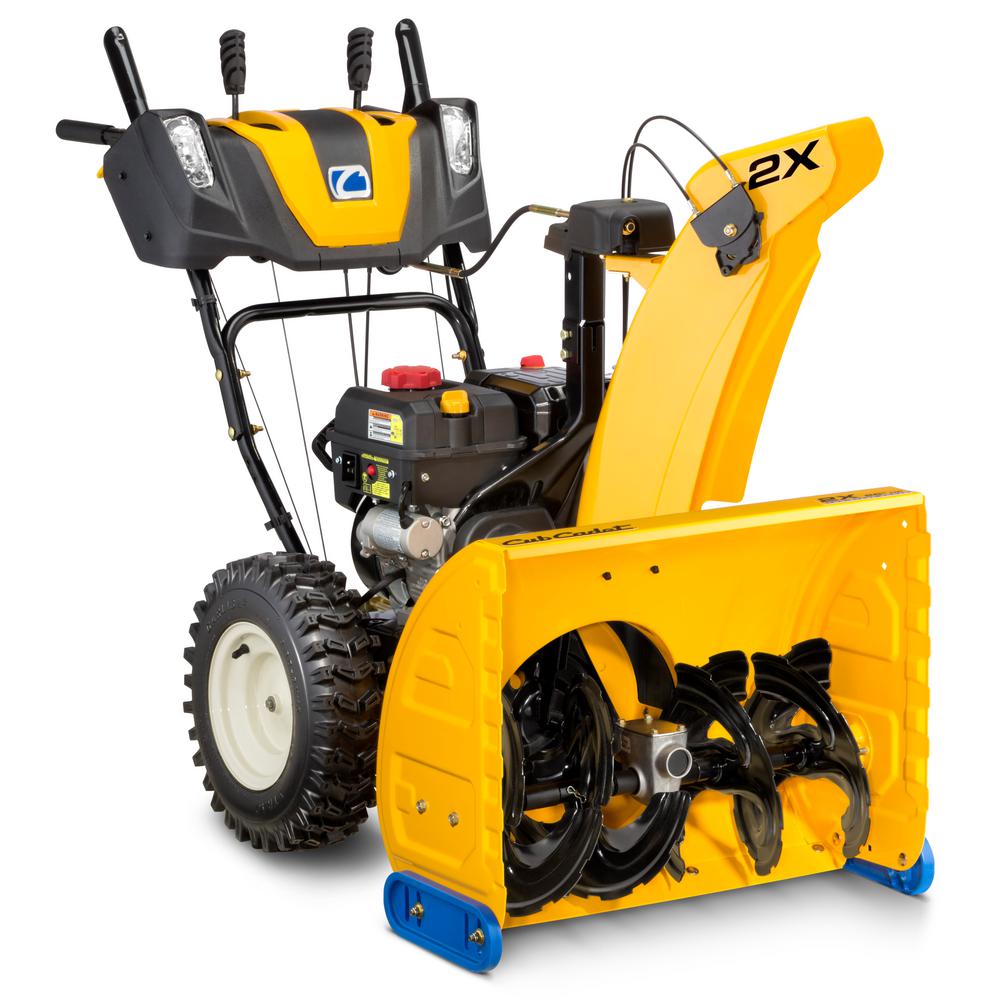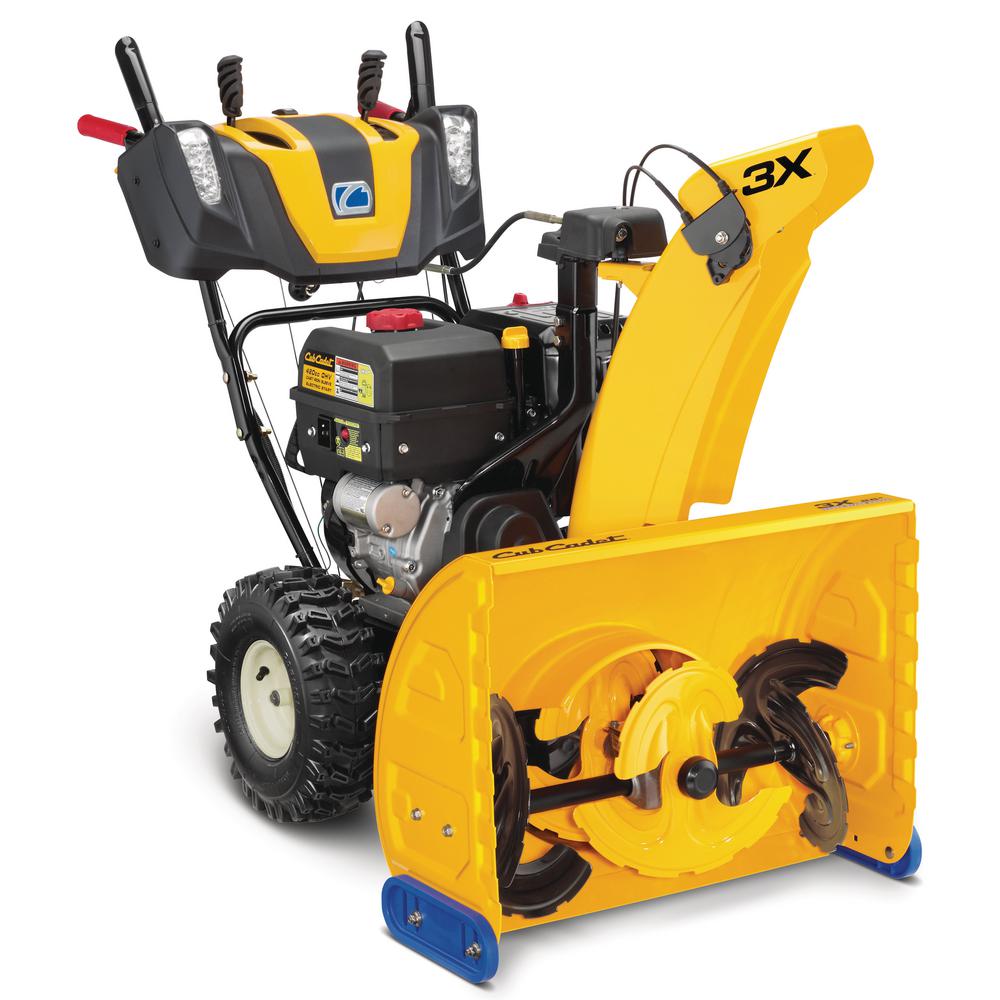Toro Power Clear 721 QZE 21 in. 212 cc Single-Stage Self Propelled Gas Snow Blower with Electric Start
Toro 21 inch Gas Self-Propelled Single Stage Snow Blower. Electric Start simple and easy to use with push button start. Chute Control, just squeeze and shoot.
The big game is nearly here but you’ve got snow to plow. No worries, you’ll be back to the action in no time with the Toro Power Clear 721 QZE Single Stage 21 in. Gas Snow Blower with Quick Chute. Quickly and easily change the chute direction without skipping a beat. Just squeeze the quick-shoot trigger and slide the grip. Starts easily with electric start. Even deep snow jobs are a cinch, as the 212cc 4-cycle OHV engine launches snow 35 ft. Shred snow fast with the patented Power Curve system, while the self propel Power Propel system gets you moving on quickly. You’ll have more room for storage with the blower’s compact design. With Toro’s 2-year Guaranteed-to-Start promise and warranty, you’re ready for whatever winter has in store. Count on it.
- Power to blast through snow; Toro’s powerful 212cc 4-cycle OHV engine give you the power to slice through snow in no time and throw it 35 ft.
- Easy start; simply push the button and you’re ready to snow blow with electric start
- Power to blast through snow; Toro’s powerful 212cc 4-cycle OHV engine gives you the power to slice through snow in no time and throw it 35 ft.
- Get a move on; keep moving to get the job done faster with the self-propel Power Propel system; the unique scraper keeps the paddle in constant contact with the ground, pulling you through the snow
- Shreds snow fast; efficiently shreds through snow while reducing clogging with the curved rubber paddles and housing of Power Curve Technology
- Put snow where you want it; with a touch of the hand, the locking deflector lets you aim exactly where you want to throw snow from the chute
- More Room for What Matters. The sleek, compact design means you can easily store it for quick use and have plenty of room for the stuff that really matters.
- Right fit for you; ideal for medium-sized driveways that can hold up to 9 parked cars, with limited garage or storage space
- We’ve got you covered; you can rest easy knowing Toro stands behind this product with a 2-year full warranty; count on it
- Guaranteed quick start; starts in 1 or 2 pulls with the guaranteed-to-start promise
- Tested and trusted; choose with confidence, knowing millions of people worldwide count on Toro snow blowers
- For best starting results use non-ethanol fuel with an octane rating of 87 or higher, use fresh fuel less than 30-days old, add fuel stabilizer to reduce starting problems, do not mix oil with gas
- Based on average Traqline unit share for snow blower market from 2013 – March 2020
Additional information
| Assembled Depth x Height x Width(in.) | 48 x 42 x 21 |
|---|---|
| Auger Diameter (in.) | 8.5 |
| Clearing Width (In.) | 21 |
| Ideal Snow Depth (In.) | 9 |
| Intake Height (in.) | 12.5 |
| Tire Height (in.) | 7 |
| Tire Width (in.) | 1.75 |
| Certifications and Listings | No Certifications or Listings |
| Manufacturer Warranty | 2-Year Full with Guaranteed to Start |





by Baller
Great snowblower. Works really in NJ snow. Even cleaned 2 feet of snow.
by Alvarado
Thank you for the good service to the tow jong ones and the tow ladys thank you I am very pleasent with your service !
by Mike
Starts every time on the first pull. I love the chute lever , it’s quick and easy to adjust.
by Bill
I love my new Toro. It’s very easy to operate, even one handed! It cleans right down to the pavement and throws the snow easily and as far as you may need. I’m 68 and my other blower just got too hard to handle and maneuver about…so I sold it!
by Thomas
Everything is great about this machine.
by Paul
The only regret I have is, that I should have purchased one with a transmission. Other than that this is a good product.
by Mark
4th snow blower but 1st Toro. I am thrilled. Third season now. Starts 1st pull every time, chute never clogs, change chute direction on the fly, cleans down to the pavement, throws far enough for my 3 car garage driveway. Buy this!!